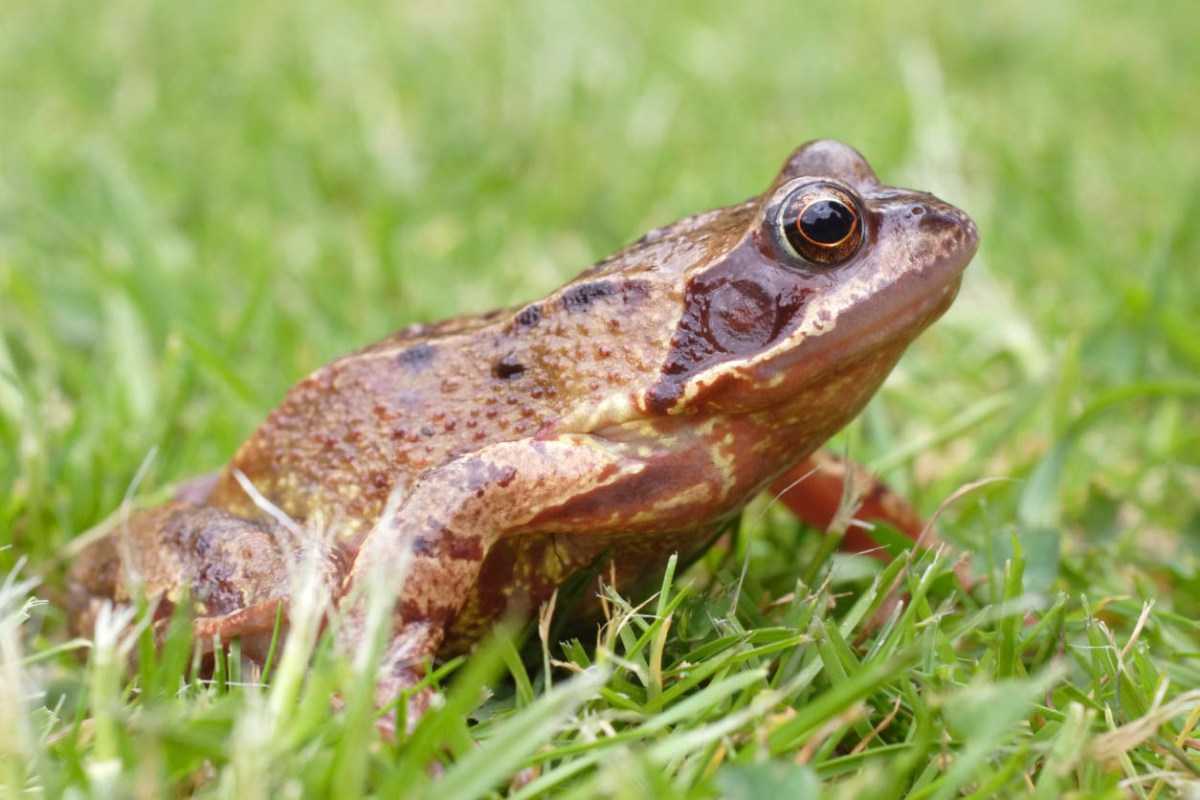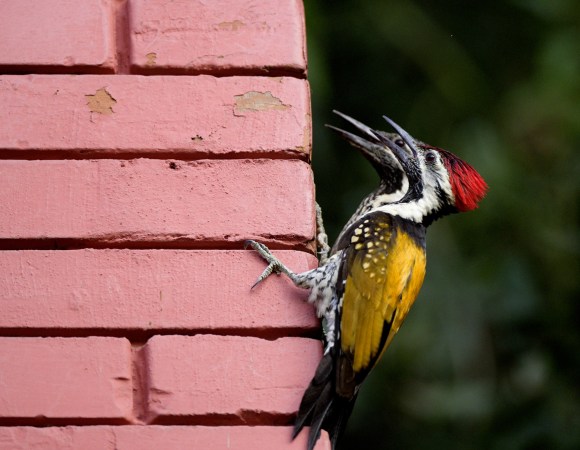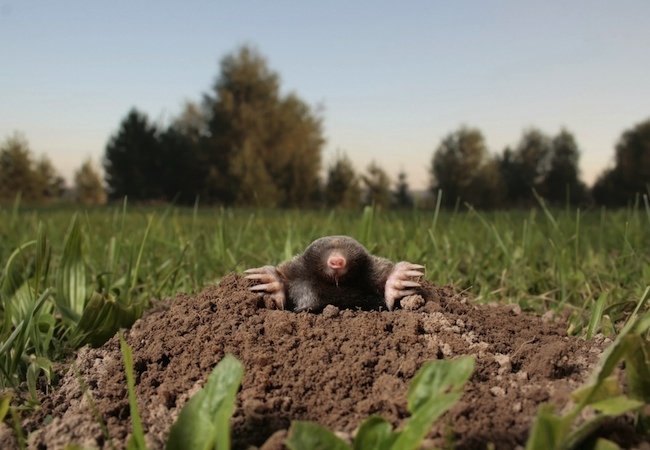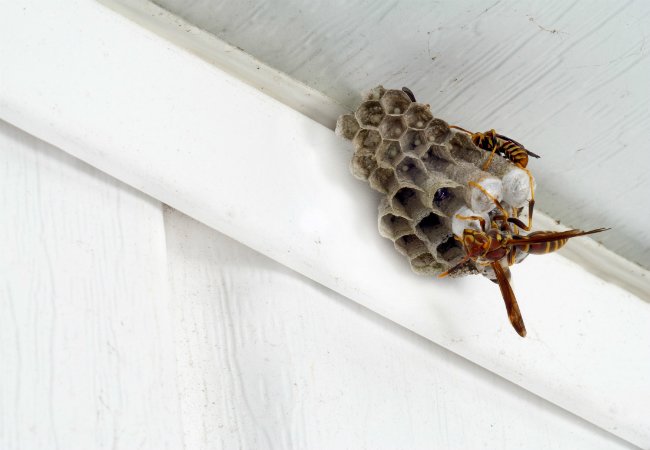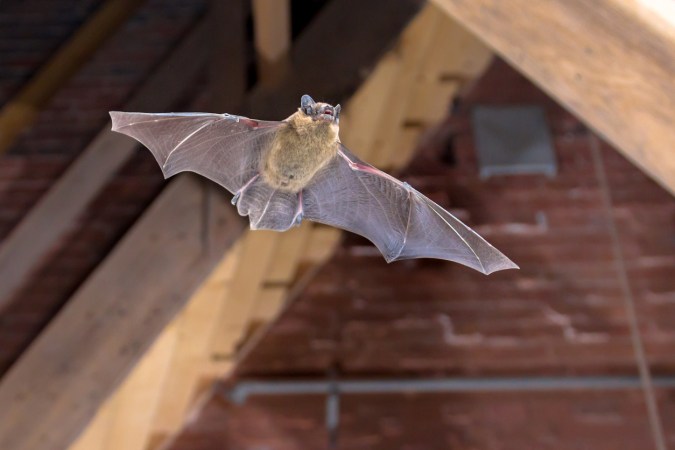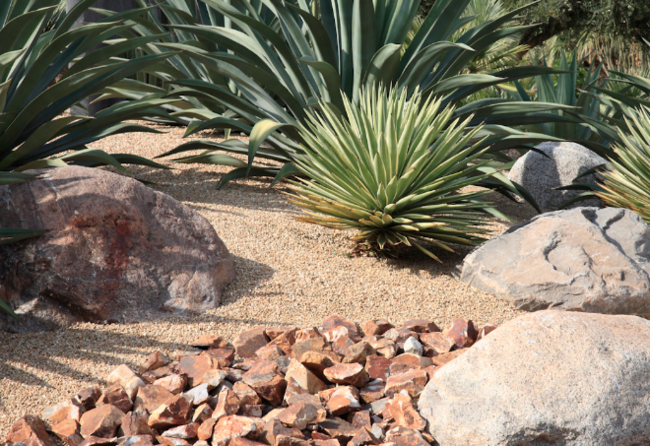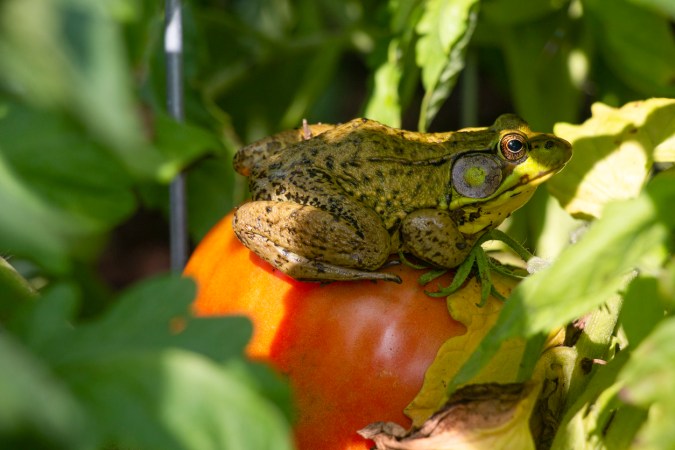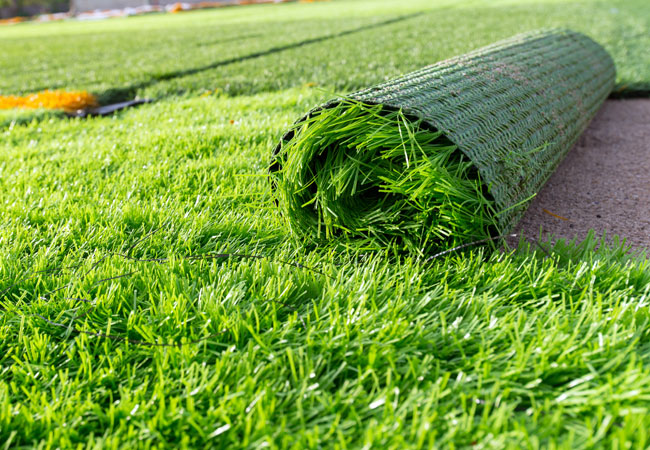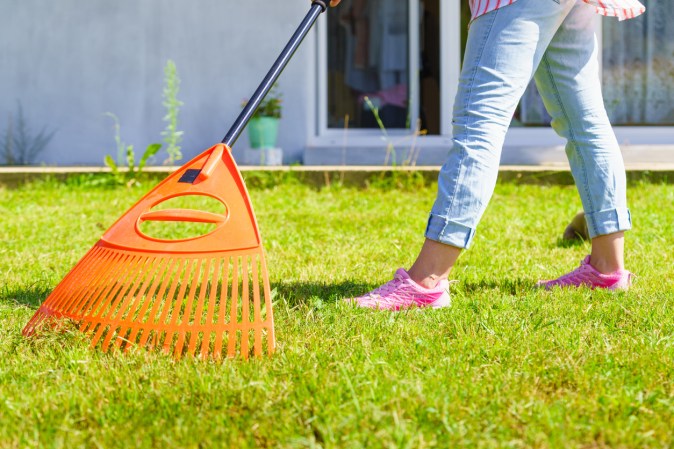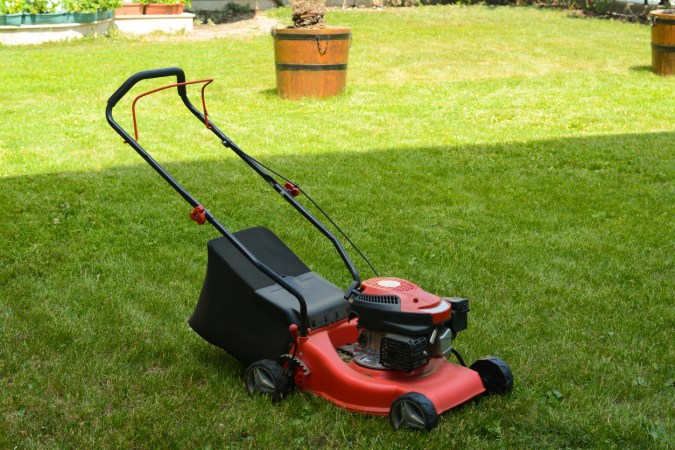We may earn revenue from the products available on this page and participate in affiliate programs. Learn More ›
Frogs are exciting and beneficial creatures to have in your yard—in moderation. The loud croaking that might draw a laugh from kids is no joke when it’s a chorus right outside your bedroom window all night long. A large frog population in your yard may indicate that you also have an insect or moisture problem, because frogs will not congregate in an area without ample food and water. Some frogs may be poisonous to pets, and frogs can attract snakes who prey on them. If you have more than one or two hopping around, it’s a good idea to figure out how to get rid of frogs and how to keep frogs away.
Removing and relocating frogs can be tricky. Many species are protected and can’t be moved or harmed–according to the Amphibian Survival Alliance, there are over 500 species of frogs that are currently critically endangered. But you can relocate their food sources and move some of the worst noise offenders to a different habitat.
Time required: 2 to 3 hours of work, plus reapplication of insecticide and regular egg scooping
Difficulty: Intermediate
Estimated cost: Varies depending on the level of infestation
Tools & Materials
Bobvila.com may earn a commission from purchases made through these links.
- Gloves
- Shoes, socks, pants, and long sleeves
- Flashlight
- Rubber snakes
- Lawn mower
- Weed trimmer or pruning shears
- Long-handled net
Before You Begin…
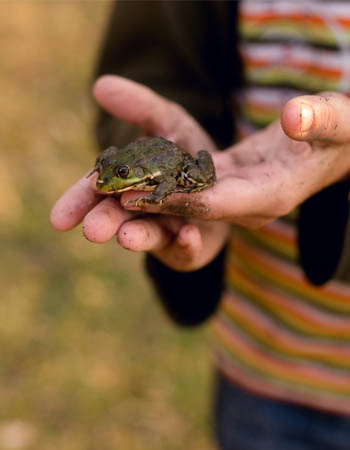
Figuring out how to get rid of frogs isn’t as simple as putting down a frog repellent. It’s a multistep process that involves solving drainage issues, removing and preventing insect infestations, and potentially relocating or, in a worst-case scenario, killing the frogs. There are several steps to follow to help choose the right course of action. If this prospect is overwhelming, a pest management professional can take care of the issue.
Tips for Getting Rid of Frogs
- Catch frogs at night with a flashlight and net and relocate them.
- Call in a pest management professional if your efforts aren’t successful.
Safety Considerations
- Some people are allergic to frogs and can have a reaction. Be sure to wear gloves, shoes, and socks when working to relocate the frogs.
- Where there are frogs, there are mosquitoes, flies, ticks, and often snakes. Wear bug repellent and cover legs and arms.
- When using insecticides and pesticides, wear appropriate protective gear.
STEP 1: Identify the species of frog.
The first and most crucial step is to identify what kind of frogs are on the property. Determine if frogs or toads are present because the mitigation strategies are different for each. Frogs are smooth-skinned and wet, as they spend most of their time in the water and have long legs that let them hop reasonable distances. Toads have dry, bumpy skin and short legs, so they crawl about instead of jumping. Both feed on insects and attract snakes. The best way to find them is to go out at night with a flashlight and check areas near water, ponds, birdbaths, and in moist brush. The flashlight will catch their shiny skin and eyes. Additionally, you can look for excrement during the day to see where the frogs are hanging out. Both frog and toad poop is larger than you might imagine—up to a third of the size of the animal itself—and is dark brown or black.
There are different frog species, and the variety makes a difference on how to handle them. Try to get a good look at the frogs and check an identification guide. Several species of frogs are protected and cannot be killed, harmed, or relocated. You may be out of luck if you’re hoping to get rid of any frogs from the genus Hylidae, commonly known as tree frogs; they are one of the country’s most protected frogs. American bullfrogs, one of the most notable noise polluters, are not protected.
STEP 2: Find out why frogs are making your property their home.
Frogs like water and insects. If there is a pool, fountain, or wet area in your yard, there’s a good chance the frogs have chosen it as their home for that reason. Similarly, overgrown plants create excellent camouflage for frogs and encourage the insects frogs eat to set up homes nearby. Some frogs will also eat pet food, so outdoor pet bowls can be inviting.
STEP 3: Make your home uninviting to frogs.
Drain any water features and leave them dry for a week or two, and eliminate or fill in damp or pooling spots in the yard. This will often be enough to drive the frogs elsewhere—they need water to live in and reproduce. A fake snake in the pool or fountain may even help to scare off the frogs. Keep plants and grass trimmed to reduce hiding places.

STEP 4: Eliminate their food supply.
Take serious steps to cut down on the frogs’ food source. Reduce the number of crickets in your yard, set up mosquito traps, and cut back brush that harbors insects. Also, turn off outdoor lights at night that attract insects and use insecticides to prevent the bugs from settling. This will essentially starve the frogs out, and they’ll relocate or die.
STEP 5: Sprinkle the ground with coffee grounds.
You may need an extra coffee after listening to frog croaking all night, but the frogs won’t. Used coffee grounds provide beneficial nitrates to soil and plants but make the ground uncomfortably acidic for frogs’ tender feet. The coffee grounds can make the soil acidic, so check that plants near the area where you spread them can tolerate some acid.
STEP 6: Spray your walkways and garden with salt water.
Many gardeners are familiar with the use of salt to repel slugs from tender plants. Frogs’ feet respond similarly to salt water. Spraying salt water on pathways, stones, and other surfaces will create a film that clings to the surface. When frogs hop on the surface, the salt stings their feet, and they will immediately move on. If they choose not to, they can become dehydrated by the salt and die.

STEP 7: Use snake repellents.
Whether it’s an evolutionary trait that frogs have learned or they just don’t like the smell, snake repellents work almost as well on frogs as they do on snakes. The repellents won’t hurt the frogs but will encourage them to settle elsewhere.
STEP 8: Set up a physical barrier.
Keeping frogs out of the yard after you’ve cleared the area is a great option, but remember—frogs can jump. A mesh fence, either metal or plastic, with holes smaller than chicken wire and tall enough so that the frogs can’t hop over will protect the yard from reinfestation. It may be possible to put a barrier around pools or water features rather than the entire yard so that frogs don’t move in.
STEP 9: Stop the reproduction cycle.
Frogs lay their eggs in water, and tadpoles need to swim to eat and grow into adult frogs. You’ll see eggs clustered together in the water of your pond or pool (toad eggs are laid in a chain pattern, while frogs produce clusters). The eggs and tadpoles can be scooped out of the water with a long-handled net and left out to dry. The eggs can’t hatch without water, and the tadpoles can’t survive on land. Some frogs, like strawberry poison dart frogs or ‘Oophaga pumilio,’ lay their eggs on the water’s edge. As frogs can breed prolifically, this is an essential step if there are water features on the property.
STEP 10: Turn to an exterminator.
If you’ve tried everything and are still overwhelmed with frogs (or just don’t know where to start), contact a professional exterminator. Many companies offer a combined mitigation/extermination service and will relocate or kill and help with prevention options for the future. Exterminators may use heavy chemicals to remove existing populations, so ask questions if you have pets, children, or other vulnerable wildlife in the yard.
While there are benefits to having a few frogs in your yard, they become pests when there are too many and can indicate a larger insect or drainage problem. Once you know what kind of frogs you have and whether it’s legal to catch and relocate, deter, or kill the frogs in your yard, the steps explained here will help make your yard frog-free and keep frogs away.

